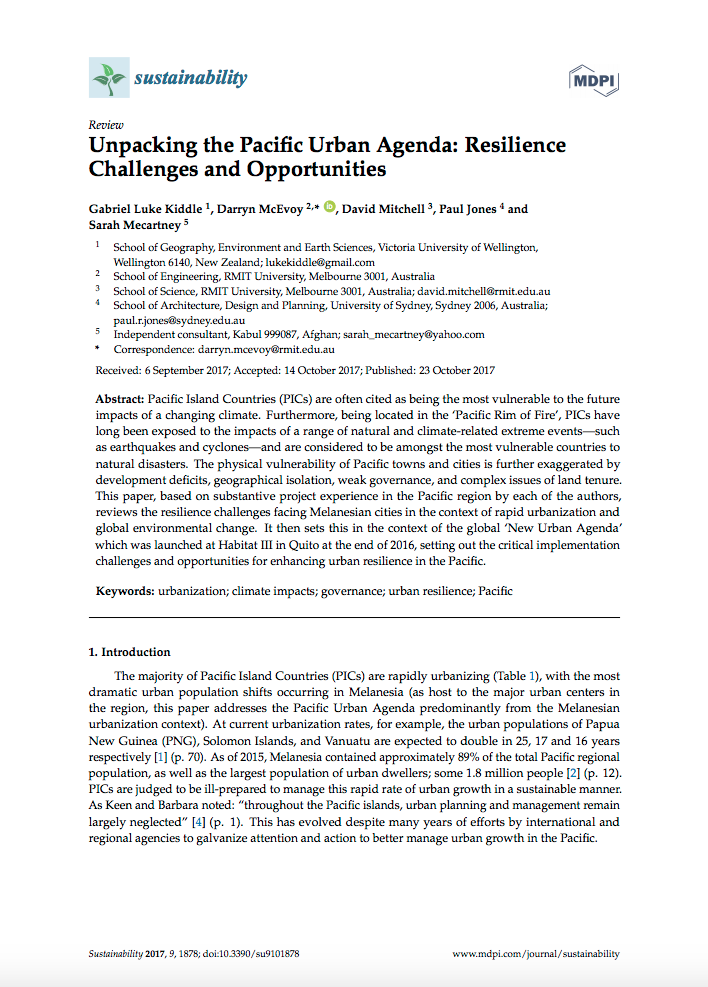Resource information
Pacific Island Countries (PICs) are often cited as being the most vulnerable to the future impacts of a changing climate. Furthermore, being located in the ‘Pacific Rim of Fire’, PICs have long been exposed to the impacts of a range of natural and climate-related extreme events—such as earthquakes and cyclones—and are considered to be amongst the most vulnerable countries to natural disasters. The physical vulnerability of Pacific towns and cities is further exaggerated by development deficits, geographical isolation, weak governance, and complex issues of land tenure. This paper, based on substantive project experience in the Pacific region by each of the authors, reviews the resilience challenges facing Melanesian cities in the context of rapid urbanization and global environmental change. It then sets this in the context of the global ‘New Urban Agenda’ which was launched at Habitat III in Quito at the end of 2016, setting out the critical implementation challenges and opportunities for enhancing urban resilience in the Pacific. View Full-Text



